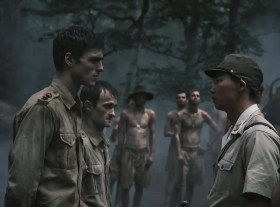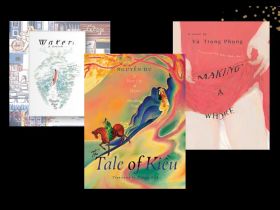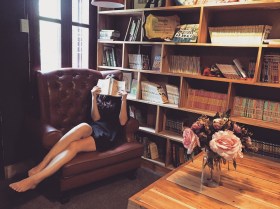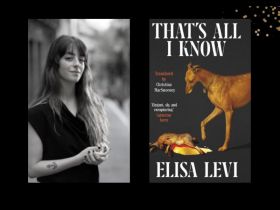The impressive rise to stardom of author Kate Morton and her haunting, page-turning novels isn’t anything like typical for a relatively new writer. With two books to her credit and a third one on the way, Kate is an inspiration to would-be writers everywhere. Her first novel, The House at Riverton, sold over half a million copies and its successor, The Forgotten Garden, published in the UK earlier this year, seems set to follow the trend, having reached the number one position in the Sunday Times paperback fiction bestseller list for UK books in June. But the appearance of a rapid ascent to fame can be somewhat illusionary: Morton herself had two full-length manuscripts rejected before she achieved success. As she acknowledges, ‘Most writers have war stories about the years of failure and rejection before they experienced their overnight success!’
Success for Morton is about communicating to the reader: ‘…enveloping them in the world of the story so that they feel bereft when they reach the end. I think that’s a lot more likely to happen if you love what you’re writing and a piece of your heart is in the book.’ For Morton, writing about what you love, about what interests you and what you want to read is fundamental. Her own interests include stories that combine mystery, memory and the past: lost gardens, derelict houses and dark secrets. And authors she admires, not surprisingly, include Daphne du Maurier, Barbara Vine (Ruth Rendell) and the Brontës.
For those aspiring to be novelists, simply putting pen on paper is the first step in what can seem a long and difficult road to take. Morton’s advice is ‘…to allow your idea the time to gestate – if it feels real to you, it will feel real to your reader, too.’ She adds that before beginning to write herself, she spends quite a bit of time getting to know her characters and plot. ‘I read everything I can get my hands on around the subject so that the world of my story begins to take shape. I like to imagine that the story is already out there, that it happened to real people, and it’s my job to uncover it rather than to make it up. I scribble ideas that may come to nothing, I daydream about my characters.’ The process is one of getting to know the atmosphere, the voices of the story and then, as she says, ‘…suddenly, all the disparate jigsaw pieces start to link up.’
Getting to know your plot and characters is essential – so is discipline. For Kate Morton, using the time she has effectively is vital. ‘Though there are days when I don’t add to my word count, I’m still always working on my book: dreaming, or jotting ideas in my notebook, keeping the world of the story alive. There’s a danger of slipping out of the story if you spend too much time away from it and I want my books to feel rich and textured. I don’t want my readers to fall out of the world so I can’t afford to either. Besides, I don’t like to think of my characters standing where I left them, swaying sort of aimlessly while they wait for me to come back and give them new life!’
Morton acknowledges that ‘Writing a book is like building a house: it takes time and effort, and you need a firm underlying structure to hold it together.’ She cautions that you should ‘Give yourself the time to work out the direction in which your story needs to go.’
For many people, the initial part of a new book is the easiest, the ideas are flowing, both the enthusiasm and the motivation are there, and are driving the work forward. Many authors however reach a point, part way through, where words dry up or they write themselves into a corner, and find they’re faced with that well-known complaint, writer’s block. Morton says, ‘Once you begin writing, the most important thing is to keep going even if you hate everything you write – and you will at times. Most writers swing between thinking they’re either gods or sods, but so long as you keep putting words down you can always come back later. You can’t edit a blank page.’ She acknowledges that the middle of a book is definitely the most challenging part to write, with the energy so evident at the beginning wearing off, and the end being well out of sight. ‘Whenever I reach a sticking point I take myself and my notebook to a coffee shop… where I let myself imagine. Somehow that brief separation from my manuscript helps me to see things clearly and refills me with the enthusiasm and direction to start typing again.’
Morton freely acknowledges that there are many challenges inherent in the writing process, from development of character and plot, the effort of continuing and being faced with doubt, to ‘…the agony of hitting a knot in the story and not seeing any way to untie it’ but notes ‘…the joy when the solution finally appears!’ She adds a further positive point, when she says, ‘Fortunately these types of challenges are subsumed by the glorious and fulfilling moments that also shape the journey. In fact, the rewards and challenges are often in direct relation.’
The writing process, as well as containing the development of a story, a book, often also involves the development of the author. Kate Morton has this to say.
‘When I started writing The House at Riverton I had very little expectation of publication. I’d already had a couple of manuscripts rejected, I’d recently had a baby, and I felt as if I’d dropped completely out of the world of publishing. I decided that the best thing to do was to forget about genres or markets and just write the book I wanted to read.
‘The Forgotten Garden was different insofar as I was contracted before I started, and Riverton had already achieved a certain level of publishing success. I was waylaid in the beginning by the demands of sending Riverton into the world along with fears that The Forgotten Garden wouldn’t live up to expectations. After grappling with these demands I realised that I had to close my mind to external voices and just write for my own pleasure as I’d done with Riverton.’ She goes on to add:
‘With each book I learn more about writing in general and more about myself as a writer. With The Forgotten Garden I learned to trust my own instincts, which can sometimes be more difficult than it sounds. I also learned to be more flexible with my approach: what worked with one project may not work with another, and that’s okay.’
It’s clear to the observer, both from Kate Morton’s work and from her words, that she is a dedicated craftsperson. She has a few nuggets of advice to those who would like to follow her into the world of books:
‘Read! Especially books written by writers you consider better than yourself. And read critically: why do you like it (or not), what is the writer doing that appeals to you or makes their characters/plot/setting stronger than those in another book, why do words arranged in a certain way make you feel something?
‘And write! You’ll get better with each attempt,’ she says.
In fact this is something she discovered herself when starting out – ‘That you get better with practice. Thank goodness! It’s a great pleasure to be involved with a pursuit in which you improve with age.’
Further Information:
The Forgotten Garden (2008) and The House at Riverton (2007) are published in the UK by Pan Macmillan.
And for those out there who would like a hint about her next novel, ‘It’s set in the early years of World War II and I’m absolutely loving writing it.’




